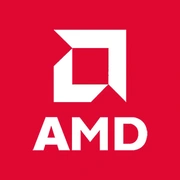AMD Radeon R9 370

AMD Radeon R9 370 in 2025: Is it Worth Getting a Legend from the Past?
Professional Analysis for Budget Segment Enthusiasts
Introduction
Even a decade after its release (in 2015), the AMD Radeon R9 370 remains a topic of debate among gamers and PC builders. In 2025, this graphics card is more of an artifact than a relevant solution, yet it can still be found for sale (new units are rare, priced between $50–$80). Who is it suitable for? Let’s delve into the details.
Architecture and Key Features
GCN 1.0: The Foundation
The R9 370 is built on the Graphics Core Next (GCN 1.0) architecture with a 28 nm manufacturing process. This is the first generation of GCN, which laid the groundwork for future AMD solutions. The Trinidad Pro chip includes:
- 1024 stream processors;
- 32 texture units;
- 64 raster operation units.
Unique Features:
- Mantle API (the predecessor to Vulkan and DirectX 12) — improves optimization for multi-core CPUs;
- Eyefinity — support for up to 6 monitors;
- TrueAudio — hardware sound processing.
What’s Missing?
- FidelityFX (introduced in 2019) — the card does not support modern sharpness enhancement algorithms;
- Ray Tracing — not possible at the hardware level.
Memory: GDDR5 and Bandwidth
- Memory Type: GDDR5 (not GDDR6 or HBM);
- Capacity: 2 GB or 4 GB (versions differ in price and performance);
- Bus: 256-bit;
- Bandwidth: 179.2 GB/s (for the 4 GB version).
Impact on Performance:
- 2 GB — critically low for 2025 games even on low settings (for example, Cyberpunk 2077: Phantom Liberty "consumes" 3–4 GB of VRAM at 1080p);
- 4 GB — the minimum acceptable option for lighter projects like Fortnite or CS:GO 2.
Gaming Performance: Realities of 2025
1080p Resolution (Low/Medium settings):
- CS:GO 2: 90–110 FPS (Medium);
- Apex Legends: 45–55 FPS (Low);
- The Witcher 3: 30–35 FPS (Low);
- Hogwarts Legacy: 20–25 FPS (Low, with drops due to VRAM shortage).
1440p and 4K: The card is not intended for these resolutions. Even in older games (like GTA V), 1440p delivers 25–30 FPS on Medium.
Ray Tracing: The lack of hardware support makes RTX effects unavailable. Software emulation (via Proton or mods) reduces FPS to 5–10 frames.
Professional Tasks: The Weak Link
- Video Editing: In DaVinci Resolve or Premiere Pro, rendering 1080p video will take 3–4 times longer than on a modern iGPU (e.g., Ryzen 8600G);
- 3D Modeling: Blender and Maya work, but only with simple scenes. OpenCL acceleration exists, but its effectiveness in 2025 is 15–20% compared to NVIDIA RTX 3050;
- Scientific Computing: The card supports OpenCL 1.2, but is unsuitable for machine learning or physical simulations.
Conclusion: The R9 370 is only suitable for basic tasks (office work, web design in Photoshop).
Power Consumption and Thermal Output
- TDP: 150 W;
- Recommended PSU: 450–500 W (considering headroom for the CPU and peripherals);
- Temperatures: 70–85°C under load (depends on the cooling system).
Cooling Tips:
- Use a case with at least 2 fans (1 intake, 1 exhaust);
- Replace thermal paste if the card is used (will reduce temperatures by 5–10°C);
- Avoid compact cases — hot air will stagnate.
Comparison with Competitors
Analogues from 2015-2017 (relevant in the second-hand market):
- NVIDIA GTX 950: Lower TDP (90 W), but worse performance in DX12 games;
- AMD RX 460: More energy-efficient, but weaker in OpenCL tasks;
- NVIDIA GTX 1050 Ti: Better driver optimization in 2025, 4 GB GDDR5, 75 W TDP.
Modern Budget Analogues (2025):
- Intel Arc A380 ($120): Supports DX12 Ultimate, 6 GB GDDR6, 2-3 times higher FPS;
- AMD Radeon RX 6400 ($130): PCIe 4.0, 4 GB GDDR6, low power consumption.
Practical Tips
Power Supply:
- Minimum 450 W (80+ Bronze or higher);
- Ensure there is a 6-pin PCIe connector.
Compatibility:
- Platforms: Works with PCIe 3.0 and newer, but in PCIe 4.0/5.0 slots — no speed boost;
- Drivers: Official support from AMD ended in 2022. Use modified drivers (e.g., NimeZ) for Windows 11 24H2.
Nuances:
- Not compatible with Resizable BAR (technology from 2020+);
- On Linux, AMDPRO drivers work stably but without optimizations for new games.
Pros and Cons
Pros:
- Extremely low price for basic tasks;
- Repairability (simple design);
- Support for Multi-GPU (CrossFire) for experimenters.
Cons:
- Lack of VRAM for modern games;
- High power consumption relative to performance;
- No support for DLSS, FSR 3.0, or ray tracing.
Final Conclusion: Who is the R9 370 Suitable For?
This graphics card is an option for:
1. Builders of ultra-budget PCs (up to $200) for office work, studies, or retro gaming;
2. Enthusiasts experimenting with mods on old hardware;
3. Owners of old systems, where upgrading to a modern GPU requires replacing the PSU and motherboard.
Alternative: If your budget allows $120–150, it’s better to get a new Intel Arc A380 or AMD RX 6400 — they will reliably handle 2025 games on low settings and save on electricity.
Postscript
The R9 370 in 2025 is an example of a "surviving" GPU that continues to serve despite its age. It should only be considered as a temporary solution or a component of a nostalgic build. For all other scenarios, the market offers far more advantageous options.
Basic
Memory Specifications
Theoretical Performance
Miscellaneous
Benchmarks
Compared to Other GPU
Share in social media
Or Link To Us
<a href="https://cputronic.com/index.php/gpu/amd-radeon-r9-370" target="_blank">AMD Radeon R9 370</a>